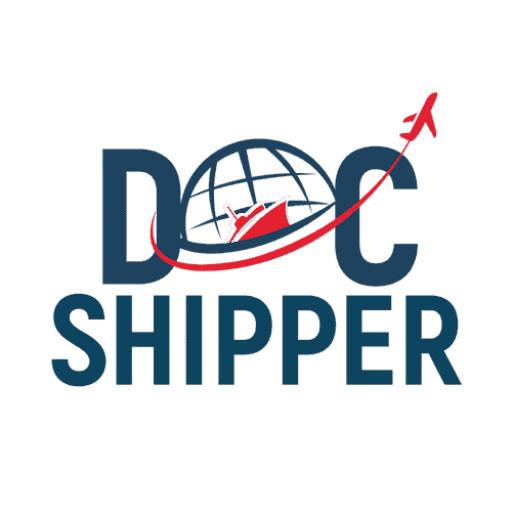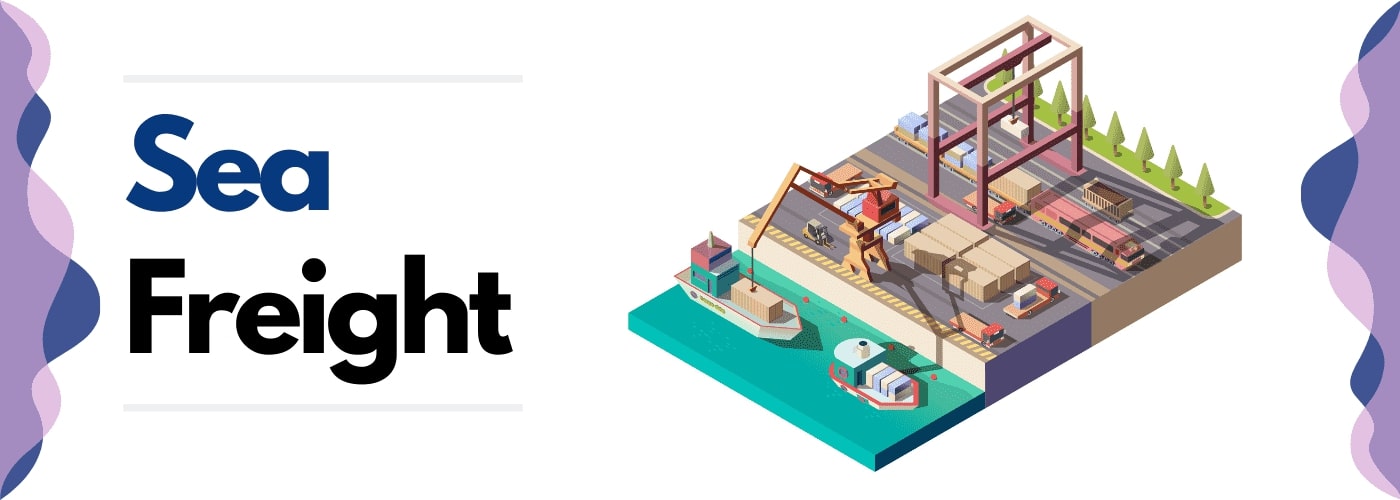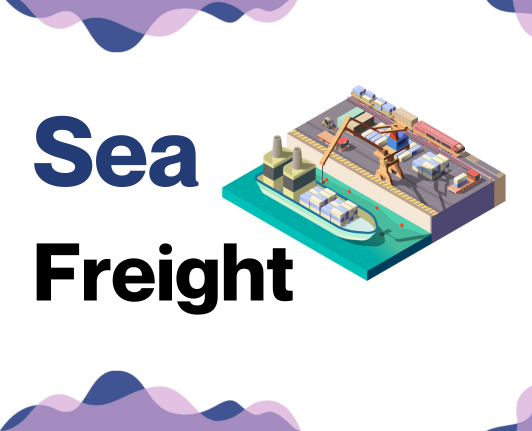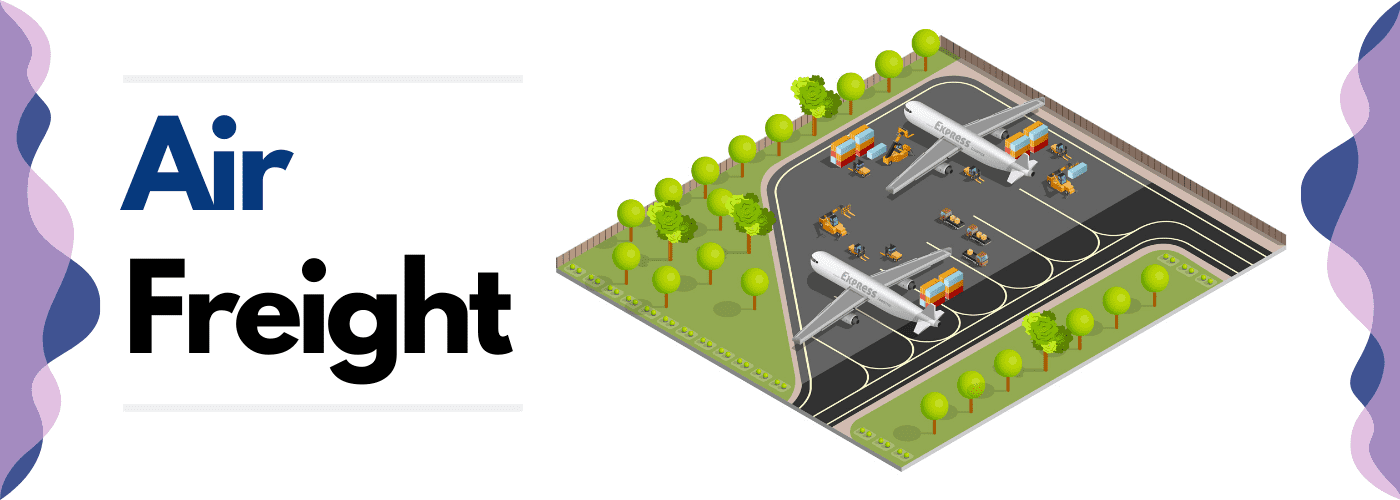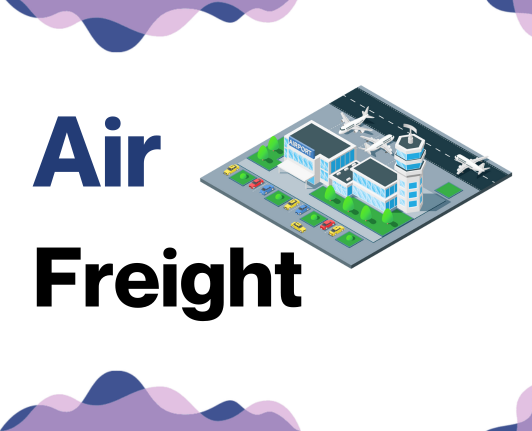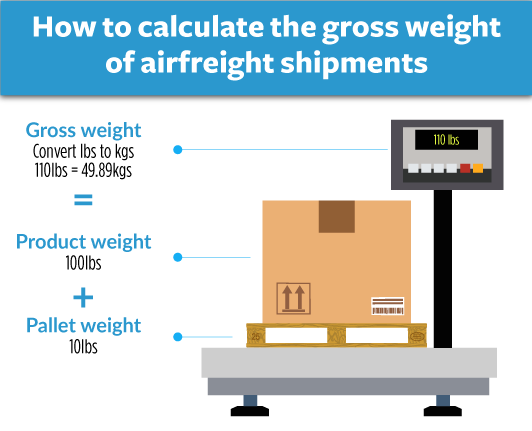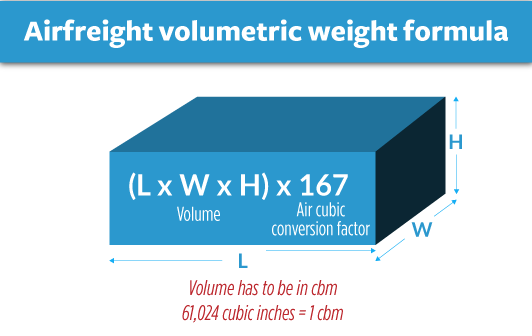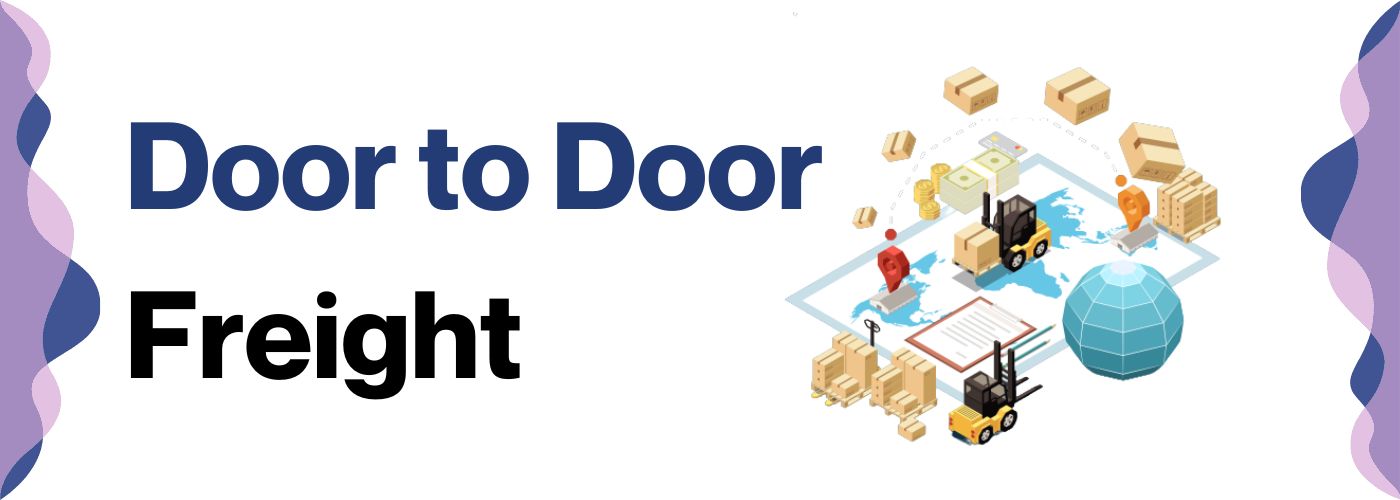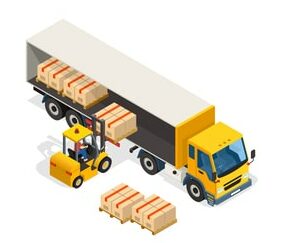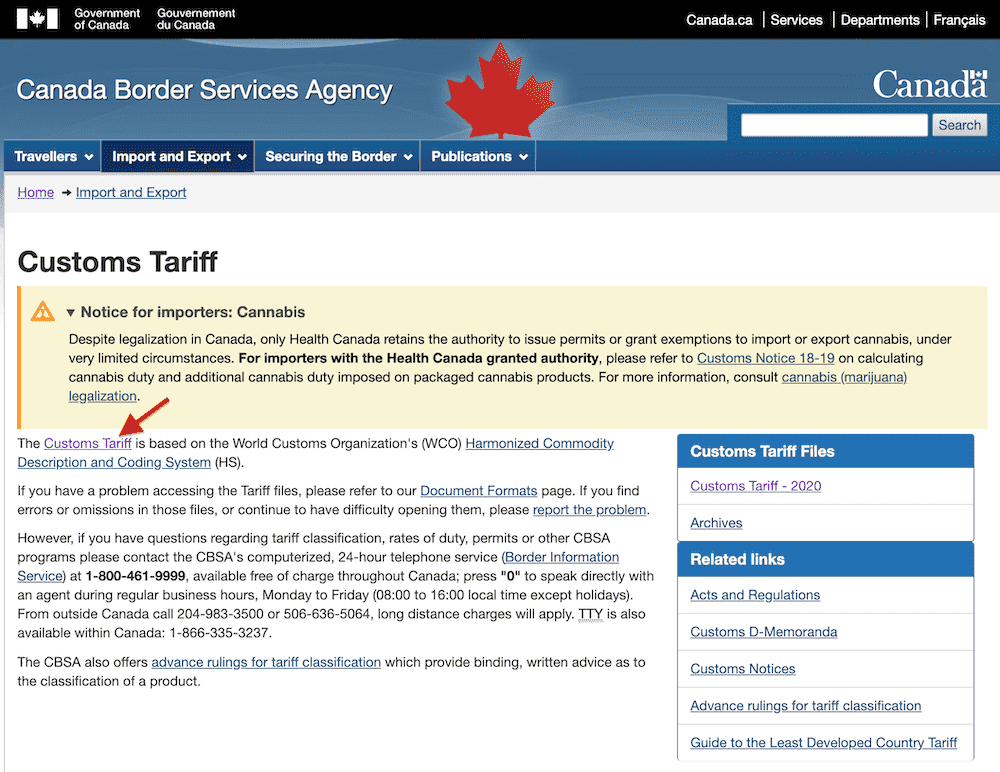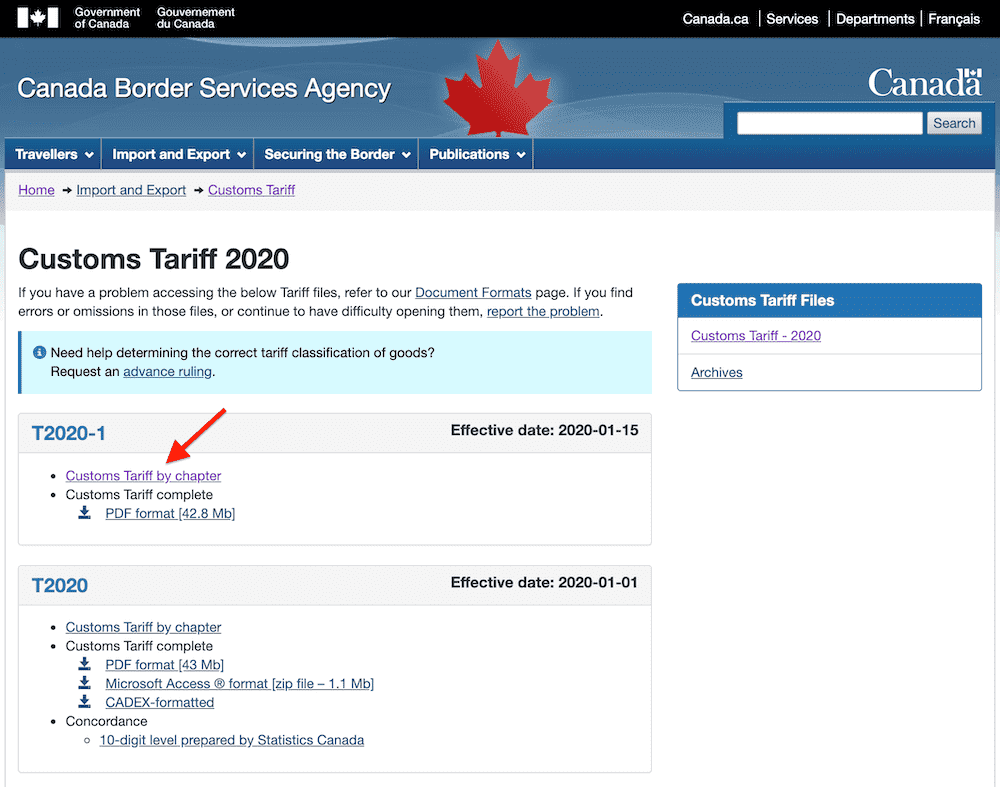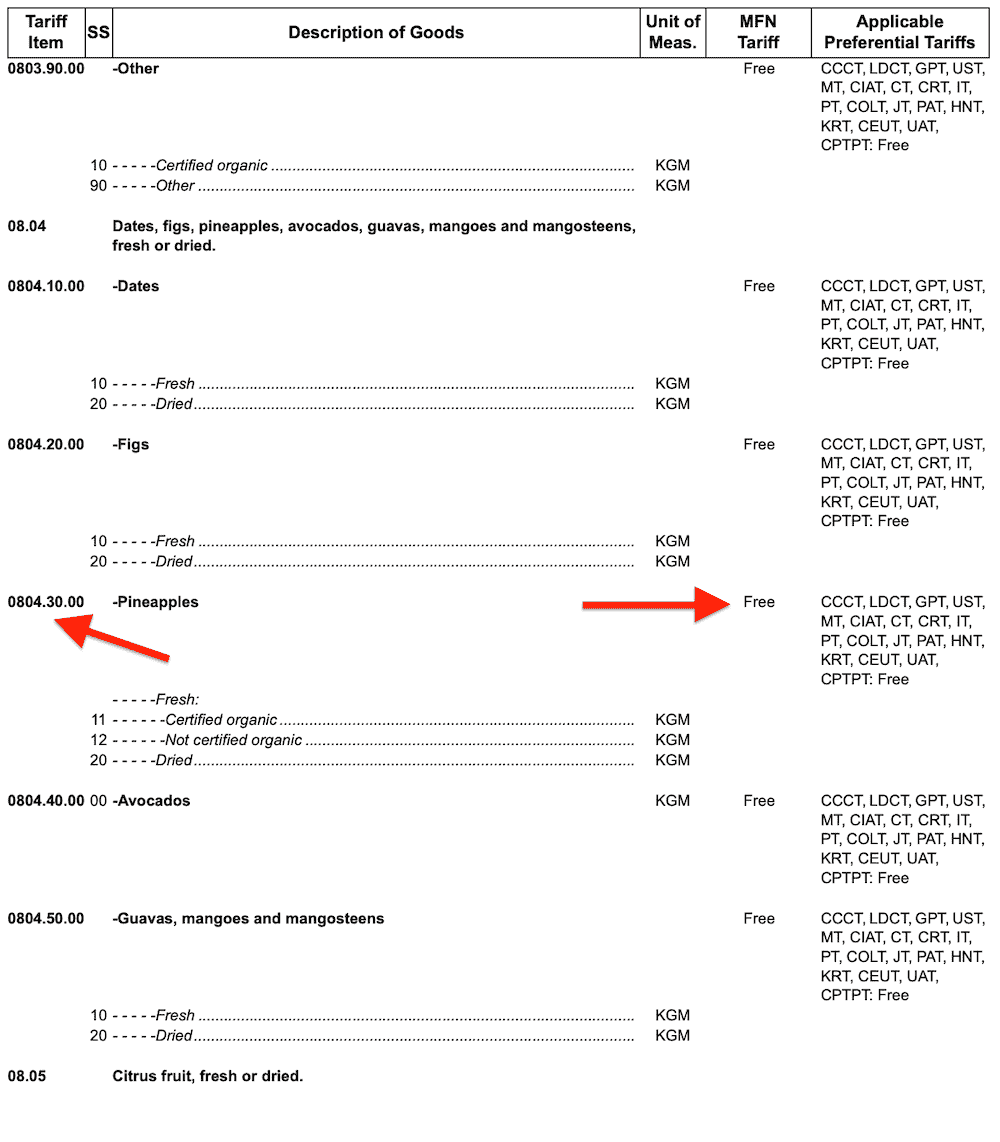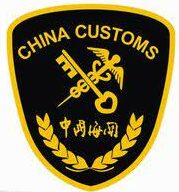Did you know that shipping between China and Canada comes with its share of fortune cookies and maple syrup? Though it is a humorous comparison, getting a grip on the complex rates, fluctuating transit times, and the labyrinth of customs regulations could quickly turn into a blocked ship channel. This comprehensive resource guide aims to lighten that load. Through it, you'll gain insights on the numerous freight options - from air, sea, road, to rail, delve into the nitty-gritties of customs clearance procedures, and comprehend the nuances of duties and taxes. We've also loaded nuggets of tailored advice to effectively steer businesses amidst choppy logistic seas. If the process still feels overwhelming, let DocShipper handle it for you! We're an international freight forwarder that turns your logistical challenges into tangible success, managing every step of your shipping voyage from departure to arrival.
Which are the different modes of transportation between China and Canada?
Choosing the best transport method from China to Canada is like selecting the fastest route in a marathon - the circumstance dictates the choice. Geographically, Canada and China are separated by vast oceans and multiple countries. This distance often narrows options to sea and air. The sky route is quick but costly, ideal for lightweight, high-value items. Ocean freight, slower yet cost-effective, suits larger, heavy goods. Your cargo's nature, urgency, and budget should guide your ideal path across the globe. Get it right, and it's a smooth sail (or flight) to success.
How can DocShipper help?
Looking to ship goods between China and Canada? Rely on DocShipper's seasoned expertise. We handle all hard yards from logistics planning, customs clearance to administrative workflows. With us, global trade feels like a walk in your local supermarket. Want a free cost estimate? Contact us and get it within 24 hours. For queries, our consultants are just a call away. Ready to simplify your shipping? We're waiting!
DocShipper Tip: Sea freight might be the best solution for you if:
- You are shipping large volumes or bulky items, as sea freight offers the most space at a cost-effective rate.
- Your cargo doesn't have an urgent deadline, as sea freight typically has longer transit times compared to air or rail.
- Your shipping routes are between major ports, allowing you to leverage the extensive global network of sea shipping lanes.
Sea freight between China and Canada
Ocean shipping between China and Canada is like a busy superhighway, connecting the industrial heartlands of two nations. It’s a crucial component of a thriving trade relationship, with bustling cargo ports like the Port of Shanghai and Port Metro Vancouver acting as key gateways. While delivering your high-volume goods via sea might be like watching a snail race, with its slow pace, it is definitely the tortoise in our story—steady, reliable, and surprisingly light on your wallet.
But here's where the plot thickens. Shipping between these two global players can feel like navigating a labyrinth full of tricky customs regulations and potential pitfalls. One wrong turn could mean costly delays or customs headaches. Does the idea of fines for misdeclared cargo keep you awake at night? Or perhaps you’ve made mistakes in your shipping documents and watched your precious cargo being held up at the port? You’re not alone!
In the upcoming section, let's delve into the best practices and savvy strategies that can turn you into the 'master of the maze'. Through taking the right turns and knowing what to expect, sea shipping between China and Canada can become a hassle-free experience. So, fasten your seatbelts and let's embark on this journey together!
Main shipping ports in China
Port of Shanghai:
Location and Volume: The Port of Shanghai is located at the middle of the Chinese coastline. It's the busiest port worldwide with a shipping volume surpassing 40 million TEU in 2020.
Key Trading Partners and Strategic Importance: As the largest cargo port in the world, it's a hub for numerous global shipping lines. Major trading partners include the United States, European Union, and ASEAN countries.
Context for Businesses: If you're looking to scale your business in East Asia or globally, leveraging the Port of Shanghai's extensive connections can be a strategic step.
Port of Ningbo-Zhoushan:
Location and Volume: Located in the East Zhejiang province, Port of Ningbo-Zhoushan has impressive shipping volumes, ranking just behind Shanghai with a volume of over 27 million TEU in 2020.
Key Trading Partners and Strategic Importance: It serves as an international trade hub, primarily dealing with Japan, South Korea, and Hong Kong.
Context for Businesses: For businesses targeting East Asia, Ningbo-Zhoushan, with its dedicated container terminals, can provide a valuable logistical platform.
Port of Shenzhen:
Location and Volume: Positioned on the Pearl River Delta on China’s Southern coastline, the Port of Shenzhen processed more than 25 million TEU in 2020.
Key Trading Partners and Strategic Importance: The port is vital for trades within the Asia-Pacific region, with top trading partners including Hong Kong, Singapore, and Malaysia.
Context for Businesses: If you're expanding your operations to the Asia-Pacific region, the Port of Shenzhen, known for its high efficiency, could be a potential gateway.
Port of Guangzhou:
Location and Volume: The port, nestled in the Pearl River Delta, handles more than 20 million TEU annually.
Key Trading Partners and Strategic Importance: Its major trading partners include Australia, the United States, and ASEAN countries.
Context for Businesses: The Port of Guangzhou, with its advanced facilities, can offer your business better access to the markets of Southern China and Southeast Asia.
Port of Qingdao:
Location and Volume: Located in Shandong province, this port handled more than 18 million TEU in 2020.
Key Trading Partners and Strategic Importance: It has strong trading relationships with Japan, South Korea, and the United States.
Context for Businesses: If your business is focused on trading with Northeast Asian countries, Port of Qingdao's extensive rail network provides excellent regional connectivity.
Port of Tianjin:
Location and Volume: Port of Tianjin, situated in Northeast China, handles over 16 million TEU annually.
Key Trading Partners and Strategic Importance: It serves as a gateway for trades with South Korea, Japan, and European countries.
Context for Businesses: If you're dealing primarily with Northeast Asia and Europe, Port of Tianjin's comprehensive services might help streamline your supply chain.
Main shipping ports in Canada
Port of Vancouver
Location and Volume: Located on the southwestern coast of British Columbia, the Port of Vancouver is Canada's largest port. It handles over 142 million tons of cargo annually, including a wide range of commodities.
Key Trading Partners and Strategic Importance: Their key trading partners include China, the USA, Japan, South Korea, and India. Its strategic location on the Pacific Rim makes it an important gateway for trade with Asia.
Context for Businesses: If you’re looking to ship commodities like grains, minerals, or forest products, then the Port of Vancouver should be an important consideration for your shipping strategy due to its extensive cargo handling capabilities.
Port of Halifax:
Location and Volume: On the eastern coast of Canada, in Nova Scotia, sits the Port of Halifax. It's the country's fourth largest port and handles about 550,000 TEUs per year.
Key Trading Partners and Strategic Importance: Main trading partners include China, Europe, the Mediterranean and the Indian Subcontinent. It is strategically important due to its position on the Great Circle Route between North America and Europe.
Context for Businesses: Besides container cargoes, if you plan to ship automobiles or breakbulk, the Port of Halifax offers specialized facilities catering to these markets.
Port of Montreal:
Location and Volume: Situated on the St. Lawrence River in Quebec, the Port of Montreal is the second largest port in Canada, handling over 1.6 million TEUs annually.
Key Trading Partners and Strategic Importance: Its prime trading partners are Europe and the Mediterranean, with a focus on containerized goods. The port's location is strategically important as it allows for the shortest direct route from Europe to the Midwest of North America.
Context for Businesses: If your business needs revolve around containerized shipments to or from Europe, leveraging the Port of Montreal could potentially save transit time and shipping costs.
Port of Prince Rupert:
Location and Volume: The Port of Prince Rupert, inhabiting the northern coast of British Columbia, offers the shortest shipping distance from North America's west coast to Asia. It has a capacity of over 1 million TEUs a year.
Key Trading Partners and Strategic Importance: Primarily serving Asia and the Americas, particularly China, Japan, and the USA, it's strategically essential due to its close proximity to Asia compared to other North American west coast ports.
Context for Businesses: If you are planning to tap into the booming Asian markets, the Port of Prince Rupert, with its shorter transit times, could give your business a significant competitive advantage.
Port of Quebec:
Location and Volume: Located at the far end of the St. Lawrence River, the Port of Quebec is known for its ability to handle a variety of cargo types. It has an annual shipping volume of over 25 million tonnes.
Key Trading Partners and Strategic Importance: Main trading partners include Europe, Africa, and Central America. The port is notable for its year-round deep-water facilities.
Context for Businesses: With its facilities geared towards handling diverse commodities like bulk and general cargo, the Port of Quebec would suit businesses with varied shipping needs.
Port of Saint John:
Location and Volume: Found in the Bay of Fundy in New Brunswick, the Port of Saint John is the third largest port in Canada, catering to over 28 million tonnes of cargo yearly.
Key Trading Partners and Strategic Importance: Trading largely with Europe, South America, and the Caribbean. It's strategically tapped due to its deep-water facilities that operate all year round and its connection to the North American rail network.
Context for Businesses: The Port of Saint John could be a key asset for businesses looking for multimodal logistics solutions, given its rail connectivity and capacity to handle a wide variety of cargoes.
Should I choose FCL or LCL when shipping between China and Canada?
Choosing between Full Container Load (FCL) and Less than Container Load (LCL), also known as consolidation, is a critical step in streamlining your sea freight journey from China to Canada. This decision carries significant implications on cost, delivery time, and the overall success of your shipment. In the following sections, we'll break down these two options, helping you analyze the advantages and pick the approach that best suits your unique shipping needs. Here's to empowering you with solid information for a smooth sailing freight experience.
LCL: Less than Container Load
Definition: LCL (Less than Container Load) shipping is a cost-effective service where multiple shippers share the same container for transporting their goods.
When to Use: LCL is a viable method if your cargo is less than 15 Cubic Meters (CBM). The flexible pricing allows for economical shipping of smaller loads.
Example: Let’s say you're running a small business in Canada that deals in niche home decor items sourced from China. Your order quantity is typically less than 15 CBM. Here, an LCL shipment would mean cost-efficient shipping without waiting to fill a complete container.
Cost Implications: LCL freight is priced per volume rather than a flat rate. Therefore you pay only for the space your goods occupy. However, shared handling can increase the chance of damage or misplaced goods. Plus, it may involve multiple stops for unloading other's goods along the way, which might extend the transit time. Hence, consider the trade-off between price and transit times with LCL freight.
FCL: Full Container Load
Definition: FCL (Full Container Load) is a type of ocean freight where an entire container is exclusively allocated to a single shipment. This means there's only one supplier's goods in that specific container, providing a high degree of safety as it remains sealed from pick-up in China to delivery in Canada.
When to Use: If your cargo is more than approximately 14 CBM (cubic meters), going for FCL shipping is a smart option. This is what fits into a 20'ft container. Larger volumes, up to around 28 CBM, can typically fit into a 40'ft container.
Example: Imagine you're a furniture manufacturing company based in China, and have a large shipment to your retailer in Toronto. The shipment includes dining sets, bedroom sets, and garden furniture which make up more than 14 CBM. Instead of splitting this into two containers, choosing FCL is wiser as it's cheaper, safer, and convenient.
Cost Implication: For large volumes, FCL shipping quote is generally far cheaper than shipping LCL (Less than Container Load), where costs are based on the volume your cargo occupies. Furthermore, the chances of cargo damage are reduced in FCL as constant handling of goods in LCL can potentially lead to more damage incidents.
Unlock hassle-free shipping
Explore hassle-free cargo shipping with DocShipper—your trusted freight forwarder. Our ocean freight experts specialize in guiding businesses through the choice between consolidation and full container loads. We’ll help you factor in your shipment volume, budget, and desired delivery speed to ensure the most efficient and cost-effective decision. Ready to simplify your trade between China and Canada? Request a free estimation today and unlock the full potential of your international logistics.
How long does sea freight take between China and Canada?
The sea freight shipping time between China and Canada typically takes around 14 to 20 days, but this is not set in stone. Transit times are influenced by factors such as the specific ports used, the weight, and the nature of the goods being transported. For a tailored quote that takes these variables into account, it's wise to speak with a freight forwarder, such as DocShipper.
| From (China) | To (Canada) | Average Shipping Time |
| Port of Shanghai | Port of Vancouver | 22 days |
| Port of Ningbo | Port of Prince Rupert | 16 days |
| Port of Shenzhen | Port of Montreal | 43 days |
| Port of Hong Kong | Port of Montreal | 43 days |
*Please note that these are average shipping times and actual times may vary.
How much does it cost to ship a container between China and Canada?
Understanding the cost to ship a container from China to Canada can seem complex due to multiple influencing factors. Ocean freight rates connect directly to these variables, including the Point of Loading and Destination, the carrier engaged, the nature of your goods, and market fluctuations. However, estimating a broad range, shipping rates per CBM might lie anywhere between $50 to $200. Accuracy, though, isn't guaranteed in this sector owing to the mentioned factors. At our company, we emphasize a personalized, case-by-case approach, where our shipping specialists collaborate with you to procure the best shipping cost. Your assurance – our commitment.
Special transportation services
Out of Gauge (OOG) Container
Definition: An 'Out of Gauge Container', also known as an OOG container, is a specialized container designed to transport goods that cannot fit into standard-sized shipping containers due to their size or shape.
Suitable for: Items that exceed the dimensions of a standard 20 or 40-foot container in terms of length, width, or height.
Examples: Large machinery, industrial equipment, or oversized vehicles are typically shipped via OOG containers.
Why it might be the best choice for you: If you're a business dealing with large, unusual-shaped goods that need to be shipped securely, OOG transport ensures quality transportation between China and Canada.
Break Bulk
Definition: Break bulk refers to cargo that needs to be loaded individually rather than in a container, commonly referred to as loose cargo load.
Suitable for: Commodities that are either too big or too heavy to be loaded onto a container and are therefore transported in separate units.
Examples: These could include yachts, huge steel beams, or even giant generators.
Why it might be the best choice for you: If your business ships high-volume goods that don't conform to standard shipping sizes, break bulk might be your go-to option.
Dry Bulk
Definition: Dry Bulk is a shipping method used primarily for commodities that are shipped in large quantities, unpackaged, and poured directly into the ship's hold like sand or grains.
Suitable for: Traditional bulk goods such as coal, grain, or metal ores.
Examples: Construction businesses shipping materials from China to Canada might use dry bulk for things such as cement, steel, or fertilizer.
Why it might be the best choice for you: If your business deals with unpackaged commodities, dry bulk is a cost-effective and reliable way to transport massive quantities.
Roll-on/Roll-off (Ro-Ro)
Definition: Roll-on/Roll-off, also known as ro-ro, involves vessels designed to carry wheeled cargo that can be driven on and off the ship on their wheels.
Suitable for: Wheeled cargo like cars, trucks, trailers, tractors, or even railway wagons.
Examples: An automobile company, for example, would use this service to transport multiple vehicles from China to Canada.
Why it might be the best choice for you: If you're a business dealing with vehicles or other wheeled cargo, Ro-Ro provides an efficient and secure method of transport.
Reefer Containers
Definition: Reefer containers are refrigerated containers utilized for the transport of perishable goods at required temperatures.
Suitable for: Goods that need temperature regulation, such as fruits, vegetables, cheese, meat, seafood, and pharmaceuticals.
Examples: A seafood distributor, for instance, would use this method to ensure their product maintains its quality during the shipment from China to Canada.
Why it might be the best choice for you: If your business revolves around perishables, utilizing reefer containers can help maintain the freshness of your products upon arrival.
Remember, the right mode of shipping depends on the specific needs of your cargo. At DocShipper, we're here to help make sense of these options and find the one best suited to your needs. Please don't hesitate to contact us for a free shipping quote within 24 hours.
DocShipper Tip: Air freight might be the best solution for you if:
- You are in a hurry or have a strict deadline requirement, as air freight offers the fastest transit times.
- Your cargo is less than 2 CBM (Cubic Meter), making it more suitable for smaller shipments.
- Your shipment needs to reach a destination that is not easily accessible by sea or rail, allowing you to tap into the extensive network of global airports.
Air freight between China and Canada
Shipping goods between China and Canada? Consider air freight! It's fast, reliable, and might be the perfect pick for small, high-value shipments like designer clothing or state-of-the-art tech gadgets. Imagine your shipment on a jet plane, racing across the ocean, beating maritime shipping by weeks.
But beware - rookie mistakes can put a dent in your wallet. Like packing a suitcase for a trip, you need to calculate your shipment's weight correctly to avoid expensive surprises. Costly blunders, akin to forgetting a passport, lurk in every corner – overlooking essential practices, misunderstanding policies - and we'll delve into steering clear of them. Get ready to become an air freight master!
Air Cargo vs Express Air Freight: How should I ship?
Choosing the best way to move your products between China and Canada can feel like a puzzle, but here's a simple distinction: air cargo is like carpooling with others on an airline while express air freight is like having your own dedicated plane. Now, let's dive into these two methods and figure out which one can put your business in the fast lane to success!
Should I choose Air Cargo between China and Canada?
Air cargo between China and Canada can be a cost-effective and reliable choice, especially for shipments over 100-150kg (220-330 lbs). Global airlines like China Southern Airlines and Air Canada offer cargo services with fixed schedules, ensuring predictable but somewhat long transit times. If your budget accommodates a balance between speed and cost, this option could match your shipping requirements. Remember, each shipment is unique and requires careful consideration.
Should I choose Express Air Freight between China and Canada?
Express air freight, a premium service employing cargo-only aircraft, is ideal when shipping small volume or light-weight goods. If your cargo is under 1 CBM or between 100-150 kg (220-330 lbs), you may find it beneficial. Renowned courier firms like FedEx, UPS, and DHL offer these services, ensuring speedy delivery and excellent trackability. Choosing express air freight could dramatically boost your delivery speed and overall shipping performance between China and Canada.
Main international airports in China
Beijing Capital International Airport
Cargo Volume: 1.1 million metric tons (2023)
Key Trading Partners: USA, Australia, Germany, Japan
Strategic Importance: Being one of the busiest airports in the world, it offers an extensive global network and is a critical hub for the Northern China region.
Notable Features: State-of-the-art cargo facilities, with a dedicated terminal for international freight.
For Your Business: Provides a robust infrastructure for seamless cargo handling and an extensive network of trade routes that could significantly expedite your shipping processes.
Shanghai Pudong International Airport
Cargo Volume: 4.1 million metric tons (2023)
Key Trading Partners: USA, Japan, South Korea
Strategic Importance: Acts as the primary international gateway for East China, serving as a central transit point for shipments.
Notable Features: Boasts two parallel runways and superior cargo management systems.
For Your Business: Its state-of-the-art facilities and excellent connectivity could ensure the timely delivery of your consignments and enhance your supply chain efficiency.
Guangzhou Baiyun International Airport
Cargo Volume: 2 million metric tons (2023)
Key Trading Partners: USA, Australia, India
Strategic Importance: Being South China's significant air transport gateway, it connects to more than 40 countries.
Notable Features: Offers advanced cargo services including e-freight and cargo tracking.
For Your Business: Streamlined customs processes may simplify your export and import procedures, thereby saving your company valuable time and resources.
Chengdu Shuangliu International Airport
Cargo Volume: 538,000 tons (2023)
Key Trading Partners: Germany, USA, Japan
Strategic Importance: Serves as a major hub in Southwestern China, connecting China to the Southeast Asian markets.
Notable Features: Comprehensive logistics services and temperature-controlled warehouse facilities.
For Your Business: The airport’s professional handling of sensitive goods might be an optimal solution for shipping perishables or high-value luxury goods.
Hong Kong International Airport
Cargo Volume: 4.3 million metric tons (2023)
Key Trading Partners: USA, Taiwan, Japan
Strategic Importance: Acts as a global hub connecting China to international markets and is a gateway to mainland China.
Notable Features: Known for its express cargo terminals and sophisticated cargo handling systems.
For Your Business: With its vast network and efficient operations, the airport could potentially allow your business to reach global markets faster and ensure safer handling of your goods.
Main international airports in Canada
Toronto Pearson International Airport
Cargo Volume: Toronto Pearson International Airport handles over 50% of all air cargo in Canada, processing more than 669,000 metric tonnes of cargo annually.
Key Trading Partners: Major global trading partners include the US, China, Germany, UK, and Japan.
Strategic Importance: Known as Canada's largest airport, it serves as a major hub for both passenger and freight services, linking Canada to over 180 destinations around the world.
Notable Features: It has two active terminals, with each terminal having extensive cargo facilities. The airport is also home to a Foreign Trade Zone, offering advantageous import and export services.
For Your Business: If your business engages with markets in Europe, Asia or the US, routing your shipments through Toronto Pearson could leverage its vast connectivity and accelerate your trade times.
Vancouver International Airport
Cargo Volume: This airport handles nearly 310,000 metric tonnes of cargo every year.
Key Trading Partners: Notably, China, Japan, South Korea, the US, and Germany are significant trading partners.
Strategic Importance: Being the second busiest airport in Canada, it's a crucial west coast gateway to Asia and the rest of the Americas.
Notable Features: This airport benefits from a dedicated cargo village, featuring over 400,000 sq. ft of warehouse space, cold storage, and customs inspection facilities.
For Your Business: If your business operates in sectors requiring cold storage like perishables or pharmaceuticals, consider Vancouver with its dedicated cooling facilities and speed of access to major Asian markets.
Montréal-Pierre Elliott Trudeau International Airport
Cargo Volume: The airport processes approximately 188,000 metric tonnes of cargo annually.
Key Trading Partners: The US, France, Germany, UK, and China are top trading partners.
Strategic Importance: As the third-largest airport in Canada, it supports air links with over 140 destinations and has considerable influence in eastern Canada.
Notable Features: It boasts modern equipment and facilities, including a fully automated cargo handling system for smooth and efficient operations.
For Your Business: Its strong network of international and domestic cargo flights could open opportunities for your business to penetrate new markets or consolidate existing ones, especially in Europe and the US.
Cargo Volume: Calgary airport deals with over 147,000 metric tonnes of cargo each year.
Key Trading Partners: The US, China, Japan, Mexico, and the UK are leading trade partners.
Strategic Importance: Not only a significant passenger hub but also a strategic freight hub for Western Canada, with strong connections to the US, Europe, and Asia.
Notable Features: The airport has expansive cargo aprons and dedicated cargo terminals with integrated customs facilities.
For Your Business: If your company requires high standards of speed and efficiency, Calgary’s integrated customs and fast connections could deliver your goods to their destination faster.
Edmonton International Airport
Cargo Volume: Around 40,000 metric tonnes of air cargo is processed here annually.
Key Trading Partners: Major trading partners embrace the US, Mexico, Germany, China, and Japan.
Strategic Importance: Amid the main airports in Western Canada, it provides substantial connectivity domestically and to the USA, Asia, and Europe.
Notable Features: It flaunts a large dedicated cargo area, enveloping 120 acres with direct access to major highways and rail connections.
For Your Business: Its key location and efficient connectivity to highways and rail can provide your business with additional shipping flexibility and potentially increase your reach to domestic and international markets.
How long does air freight take between China and Canada?
Shipping goods by air freight between China and Canada typically takes around 3 to 5 days. However, please note that the exact transit time can fluctuate. Factors such as the specific airports involved, the weight of the shipment, and the type of goods you're transporting can all impact the duration. To get precise times and to ensure smooth operations, consulting with a freight forwarder like DocShipper is recommended.
How much does it cost to ship a parcel between China and Canada with air freight?
The cost of air freight from China to Canada can broadly range between $3 and $10 per kg, subject to multiple factors. Actual rates can fluctuate due to elements like the exact departure and arrival airports, package dimensions, weight, and the nature of your goods. Therefore, pinning down an exact cost is a complex task. Fear not, our expert team is equipped to help navigate these dynamics and offer you the best possible rates tailored to your unique needs. Contact us and receive a free quote in less than 24 hours.
What is the difference between volumetric and gross weight?
When shipping goods, it's crucial to understand the difference between gross weight and volumetric weight. Gross weight refers to the actual weight of your shipment while volumetric weight, otherwise known as dimensional weight, relates to your shipment's overall size.
To calculate gross weight in air cargo, we simply weigh the goods, including any packaging or pallets used. Suppose you're shipping a parcel that weighs 25kg, which converting to pounds is approximately 55 lbs.
Calculating volumetric weight in air cargo, on the other hand, requires a bit more effort. Here, you measure the shipment's length, width, and height in centimeters, multiply these dimensions, and then divide by 6,000 - the standard dimensional factor in air freight. Let's say, your shipment's dimensions are 40cm x 30cm x 20cm. Therefore, the calculation would look like (40 x 30 x 20) / 6,000, which gives a volumetric weight of about 4kg, or roughly 9 lbs.
Now, for Express Air Freight services, the calculation stays the same, but the standard dimensional factor changes to 5,000. Using the same shipment dimensions as earlier, the volumetric weight becomes (40 x 30 x 20) / 5,000, rounding off to 5 kg, or around 11 lbs.
Why do these figures matter? Freight charges are typically determined by selecting the higher of the two weights: gross or volumetric. In our examples, you would be charged based on the 25 kg gross weight since it exceeds the volumetric weight. This system ensures carriers are compensated fairly for their space, even when carrying lightweight, bulky items.
DocShipper tip: Door to Door might be the best solution for you if:
- You value convenience and want a seamless shipping process, as door-to-door takes care of every step from pickup to delivery.
- You prefer a single point of contact, as door-to-door services typically provide a dedicated agent to handle all aspects of the shipment.
- You want to minimize the handling of your goods, reducing the risk of damage or loss, as door-to-door minimizes transitions between different modes of transport.
Door-to-door between China and Canada
Door-to-door shipping is a global transport solution where your goods are collected from one location (say, Beijing) and delivered right to the doorstep of the identified destination (let's say, Toronto). It’s hassle-free and time-efficient, perfect for businesses navigating the shipping landscape between China and Canada. Ready to explore the benefits further? Let's dive in!
Overview – Door to Door
Door to door shipping between China and Canada simplifies your logistics, handling all complex tasks from pickup to final delivery. It's a popular choice among DocShipper's clients for its stress-free approach, bypassing the intricacies of international customs protocols and trade regulations. However, it may cost more and take longer due to additional services. Despite these potential drawbacks, adopting this hands-off strategy can ultimately save your business precious time and resources, making it a valuable option to consider for moving your goods across the globe. This comprehensive solution brings peace of mind, making it one of the most sought-after options for international shipping.
Why should I use a Door-to-door service between China and Canada?
How amazing would it be if your shipment from China to Canada could lace up its shoes and just walk itself to the final destination, right? Well, Door-to-Door service may not imbue your freight with athletic prowess, but it's the closest thing to it. Here are five reasons why it’s your logistics MVP:
1. Stress-Free Logistics: Let's be honest, shipping can seem as complicated as learning to play a Theremin. A Door-to-Door service takes the headache out of the process by managing every stage of transportation - starting from picking up goods at the origin to dropping them off at the exact endpoint.
2. Timely Delivery: Ever waited impatiently for a favorite movie sequel, hoping there won't be a delay? You might feel the same way about your shipments. Choosing a Door-to-Door service ensures timely delivery of your urgent shipments, just like the movie release you've been waiting for.
3. Specialized Care: Imagine your complex cargo as an exotic pet. It requires special care, doesn't it? Door-to-door services have expert handlers for your specialized goods, minimizing the risk of damage and providing extra peace of mind.
4. Convenient Trucking: Hate paperwork more than receiving spam emails? Good news. Door-to-door services handle the administrative tasks related to trucking, freeing you up to concentrate on scaling your business.
5. All-Inclusive: It's the 'buffet-style' service of logistics – comprehensive and satisfying. Offering an all-in-one solution, from customs clearance to handling duties, a Door-to-Door service gives you the convenience of dealing with a single entity, making the process as smooth as your grandma’s famous gravy.
So, if you're for less stress and more success in your shipping processes, Door-to-Door could be the MVP in your logistics lineup.
DocShipper – Door to Door specialist between China and Canada
Experience stress-free, door-to-door shipping between China and Canada with DocShipper. Our comprehensive service covers everything from A to Z: packing, transportation, customs procedures, across any shipping method - air, sea, road, or rail. We're not just equipped with skills but also expertise, promising smooth coordination for your global logistics needs. Plus, each client benefits from a dedicated Account Executive for personalized service. Need a free estimate? Reach out and expect a reply within just 24 hours, or dial up our consultants at no cost. Dive into seamless international shipping now.
Customs clearance in Canada for goods imported from China
Customs clearance, the process of getting approval to import goods into a country, can be quite complex, especially when importing goods from China to Canada. Potential pitfalls like unexpected charges and administrative delays can make this a daunting task. Pinning down details of customs duties, taxes, quotas, and licenses are vital to ensuring a smooth passage for your goods. The consequences of failing to fully understand these can result in your goods being detained at customs. To navigate these hurdles, the following sections of this guide will delve deeper. Don't fret, though. DocShipper can assist with the entire process for any type of goods globally. If you need an estimate for your project, contact our team with your goods' origin, value, and HS Code. We'll make sure your shipping project is no sweat!
How to calculate duties & taxes when importing from China to Canada?
Understanding the nuances of customs duties and taxes is an essential part of the import-export landscape. Precise estimation of these levies begins with the meticulous gathering of a few key details: the origin country of the goods, the Harmonized System (HS) Code, the Customs Value, the applicable Tariff Rate, and the possible constant of auxiliary taxes and fees specific to the product type. With this information at hand, discerning the duty and tax costs becomes a feasible task.
Here's the initial step: zero in on the actual country where your goods were hatched, manufactured, or produced. Confirming this recognition, while seemingly obvious, serves as the foundational pillar in the process of estimating duties and taxes during the import of goods from China to Canada.
Step 1 - Identify the Country of Origin
First things first, the Country of Origin remains a fundamental starting point. Why, you ask? Five solid reasons back this up.
1. It's the fulcrum on which your customs groundwork swings. No Country of Origin? No accurate customs analysis!
2. Knowing the Country of Origin helps ensure compliance with Canada’s import rules.
3. This binding element unravels whether preferential duties apply under trade agreements.
4. Sparse knowledge on Country of Origin could spell trouble! This might mean non-compliance penalties.
5. That's your ticket to explore import restrictions specific to the cargo.
Let's not forget the lure of trade agreements! Canada and China have a grand arrangement - the Canada-China Bilateral APA Program. Understanding this beast can help you enjoy lower or nil duty rates.
Stifle the worries on import restrictions - yes, Canada has specific limitations on goods like textiles and food but nothing a meticulous due diligence check can't handle! A well-versed specialist service can buffet your business against these hidden nuances, offering invaluable guidance.
Make no bones about it - Step 1, know the Country of Origin. It forms an unsung cornerstone for your successful import journey.
Step 2 - Find the HS Code of your product
An HS Code, or Harmonized System Code, is a standardized system of names and numbers for classifying traded products. Developed and maintained by the World Customs Organization, it's used by customs authorities around the world to identify products and apply tariffs.
The easiest way to determine the HS Code of your product is to ask your supplier directly, as they should be familiar with the goods and the associated regulations of importing goods.
If that doesn't work, fear not, because there's another reliable method. Visit the Harmonized Tariff Schedule site, a handy HS lookup tool. Then, simply input the name of your product in the search bar. In the search results, check the Heading/Subheading column to find your product's HS code.
Please be aware that accuracy is crucial when choosing an HS Code. A wrong code can lead to considerable delays and even result in potential fines.
To round this out, here's an infographic showing you how to read an HS code. Don't hesitate to refer back to this guide for further assistance.
Step 3 - Calculate the Customs Value
Customs value, the darling of every international transaction! This isn’t just the product's price tag but rather a broader, all-encompassing term. It includes the cost of your goods, shipping charges, and even insurance, all summed up. Think of it as the total spent on getting those goods from China to Canada's shores – the CIF (Cost, Insurance, and Freight) value. For example, let's say you bought merchandise for $1000, paid $200 on shipping, and $30 in insurance - your customs value would be a hefty $1230. Keep in mind, this is measured in USD, which could alter your calculations given currency fluctuations. This value is used to assess customs duties, making it one of the most critical figures in the entire customs clearance process. It's like a key – without it, unlocking the doors to Canadian markets could truly become a conundrum.
Step 4 - Figure out the applicable Import Tariff
Import tariffs are fees imposed on goods imported into a country, essentially serving as a tax. In Canada, we primarily use an ad valorem tariff method, which is a percentage of the value of the merchandise.
Here's a step-by-step breakdown on how to find the applicable import tariff:
1. Identify the Harmonized System (HS) code of your product. This is an internationally standardized system of names and numbers for classifying traded products.
2. Use the aforementioned HS code to navigate the Canadian Customs Tariff site.
To illustrate this, we'll run a scenario while maintaining the item example from the HS Code : Pineapple - 0804 30
Once you've arrived at the URL, click the following link:
When you go to the Customs Tariff page, click on the most recent tariff, as seen below.
You've arrived at a page that lists all the sections and chapters. It may be found at the following address: Customs and the HS Code in Canada
You want to go to the part that relates to your product, in our example is:: Section II: Vegetable Products and Chapter 8 - Edible fruit and nuts
Depending on the link you choose, you may get the prices on the internet or in PDF format. Then you click, seeking for your product's precise HS Code.
Continuing with the pineapple example, the HS Code 0804 30 is as follows:
Step 5 - Consider other Import Duties and Taxes
In addition to the standard tariff rate, other import duties specific to the product and its country of origin may apply. Let's break those down:
1. Excise Duty: Excise duties are secondary taxes on specific goods. For instance, your shipment of imported whiskey from China may have an extra excise duty, say $2 per litre.
2. Anti-Dumping Taxes: If your good has been recognized as being 'dumped' into Canada at an unfairly low price, anti-dumping taxes could be applied. An example? Aluminum cookware sets from China, potentially attracting a rate of about 80%.
3. VAT (Value Added Tax): This is Canada's goods and services tax (GST), which is levied at 5% on the total value of the imported goods, including freight and insurance.
These examples and mentioned rates are purely illustrative, always consult the Canadian Border Services Agency for accurate rates. The main takeaway? Beyond the standard tariff, there may be additional charges to consider. We recommend detailed research into your particular product and origin country to ensure you don't encounter unexpected costs.
Step 6 - Calculate the Customs Duties
In 'Step 6 - Calculate the Customs Duties', we break down the method that Canadian customs uses to assess these payments for goods from China. The formula typically involves adding the customs value (the cost of the goods, insurance, and freight), VAT if applicable, and anti-dumping duties, if the item is subjected to it, to get your overall duties cost.
For example, if you're importing furniture valued at $15,000 with a 9.5% duty rate but no VAT, you'll owe $1,425 in customs duties ($15,000 x 9.5%). If the same consignment also had a 5% VAT, your duty rises to $1,725 (customs value + VAT of $750 ($15,000 x 5%), multiplied by 9.5% duty rate). Lastly, should there be a 7% anti-dumping tax ($1,050), plus a 3% excise duty (450$), your total custom cost would stand at $3,425 ($17,800 total value x 9.5%, + $1,050 + $450).
Matters of customs duties are complex, and it's easy to pay more than you have to. But we at DocShipper can handle every aspect—ensuring you don't overpay and keeping your goods moving. Contact us for a free, no-obligation quote within 24 hours.
Does DocShipper charge customs fees?
While steering your shipment through customs, DocShipper, as a customs broker in China and Canada, only charges for our customs clearance services. Contrary to common misconceptions, we don't charge customs duties - those are directly payable to the government by you. It's like purchasing something online; you pay for the product and shipping, but any import duties are your responsibility. We aid in preparing and completing all necessary customs paperwork. To ensure transparency, you'll receive documentation from the customs office verifying your paid duties. Thus, no hidden fees, just clear, stress-free shipping. Your duty, our mission!
Contact Details for Customs Authorities
China Customs
Official name: General Administration of Customs of the People's Republic of China
Official website: www.customs.gov.cn
Canada Customs
Official name: Canada Border Services Agency
Official website: http://www.cbsa-asfc.gc.ca/
Required documents for customs clearance
Untangling the web of customs documentation can be complex. Our guide deciphers essentials like the Bill of Lading, Packing List, Certificate of Origin, and Documents of Conformity (CE standard) – vital tools for a smooth and hassle-free clearance process. Get ready to remove the guesswork and banish those paperwork headaches!
Bill of Lading
When shipping goods from China to Canada, handling the Bill of Lading is central to your freight's successful journey. It acts like a passport, marking the transition of ownership from shipper to receiver. This document details the nature, quantity, and destination of the goods, making it essential for customs clearance. For a smoother process, consider electronic or 'Telex' release. This digital approach expedites processes by allowing you to receive the Bill of Lading swiftly and securely in email form. If you're using air transport, the equivalent document, known as the Airway Bill (AWB), applies. Leveraging these digital solutions can make your cross-border shipping experience far more efficient. It's all about keeping your goods, and your business, moving seamlessly.
Packing List
Perfecting your Packing List is a non-negotiable task when shipping goods from China to Canada. This vital document has your shipment's details – item types, quantities, and weights. Whether you choose air or sea freight, the Packing List acts as a route map for freight handlers, ensuring your shipment reaches the destination in top condition. For instance, if you're shipping 100 silicon chips, this exact quantity and item description must reflect in the packing list. Missing or inaccurate information could lead to costly delays during customs clearance. Therefore, it's your responsibility as a shipper to ensure details are spot-on, saving time, preventing costs, and ensuring the swift delivery of your valuable cargo.
Commercial Invoice
A Commercial Invoice isn't just a form—it's the key to smooth customs clearance when shipping your goods from China to Canada. It should reflect detailed and accurate information about your shipment, such as product description, HS Codes, unit cost, and total value. But remember, consistency is crucial. The data on your Commercial Invoice should match with your Bill of Lading or Air Waybill. This alignment avoids confusion and facilitates faster clearance at customs. An invoice that states “ceramic vases” with HS code 6913900000 and matches your Bill of Lading will pass through customs hustle-free. So, keep your documents in sync and customs won't keep your shipment on hold.
Certificate of Origin
Navigating customs between China and Canada can be smoother with a Certificate of Origin. This document substantiates where your goods are produced and can unlock preferential customs duties. Let's say you're exporting bamboo furniture from China: the certificate verifies it’s indeed made in China, potentially qualifying you for lower tariffs. It's a linchpin in your documentation toolkit - a binding guarantee of your product's legitimacy. So, always remember to include specifics about the country of manufacture on it. A well-prepared Certificate of Origin not only smoothens your transit but could also give your bottom line a pleasing lift. Happy shipping!
Get Started with DocShipper
Navigating customs between China and Canada can be complex and time-consuming. But why stress, when DocShipper can handle it? We manage every step of customs clearance, ensuring your cargo's smooth journey. Don't let paperwork derail your shipping plans. Reach out for a free, no-obligation quote today and get a response within 24 hours. Trust us and focus on what you do best - running your business.
Prohibited and Restricted items when importing into Canada
Got a shipment heading to the Great North? Beware! Canada has some tight rules on what can make it past their border. Let's dive into the nitty-gritty of prohibited and restricted items to help you avoid a Canadian customs conundrum.
Restricted Products
Here are some products that are restricted and need special licenses or permits to ship to Canada:
1. Dairy Products: You'll need to obtain a permit from the Canadian Dairy Commission.
2. Poultry and Egg Products: Securing a permit from the Chicken and Egg Farmers of Canada is required for these products.
3. Firearms and Ammunition: Application for a license from the Royal Canadian Mounted Police is needed to ship these items.
4. Flora and Fauna: Get a permit from Environment and Climate Change Canada if you're planning to ship any plant or animal species.
5. Alcohol: Importing alcohol requires a license from the Alcohol and Gaming Commission relevant to each province.
6. Tobacco Products: To ship tobacco, first apply for a permit from the Canada Revenue Agency.
7. Pharmaceuticals: Import licenses from Health Canada and the Canada Border Services Agency would be necessary.
Remember, handling restricted items can be complex. It's essential to sort out all your necessary permits and licenses to ensure your shipping operation runs smoothly.
Prohibited products
- Narcotics and controlled substances such as heroin, cocaine, and cannabis (unless licensed for medical purposes)
- Obscene materials, including pornography
- Counterfeit money and goods
- Items infringing on intellectual property rights
- Certain types of weapons including automatic firearms and mace
- Certain wildlife species and their by-products
- Most used or second-hand mattresses
- Health products that are not approved by Health Canada, including some prescription drugs
- Most goods made from dog or cat fur
- Consumer products that do not meet Canadian safety requirements, including baby walkers and jequirity beans
- Certain types of plants, seeds, and soil
- Unprocessed meats and dairy products
- Certain types and quantities of tobacco products
- Weapon-compatible silencers
Are there any trade agreements between China and Canada
Yes, China and Canada have a substantial trade relationship, although there isn't a formal FTA or EPA in place as of now. However, many Canadian businesses leverage China's Most-Favoured-Nation tariff status, which allows lower import duties. Furthermore, there are ongoing discussions about deepening bilateral economic relations, which could initiate more profitable trade opportunities. Infrastructure projects like rail-links are also under consideration, potentially enhancing future logistics. Stay attuned to these updates as they can significantly affect your shipping operations.
China - Canada trade and economic relationship
The China-Canada alliance has a rich history, rooted in trade and economic interdependence. Initiated in the late 20th century, this relationship has reached new heights with $109.2 billion traded goods in 2023. Primarily, key sectors entail energy, agriculture, aerospace, and machinery, with primary commodities like wood, seafood, and minerals. Canada’s investment in China amounted to $12.7 million in 2023, a significant decline from the $124 million in 2022. This shift reflects Canada’s efforts to diversify its investments away from China. Meanwhile, Chinese direct investment in Canada has also seen a decline, from $21.9 billion in the past to an unknown amount in recent years. Despite these changes, the bilateral investment relationship between Canada and China remains important, with China remaining an important destination for Canadian investors
Your Next Step with DocShipper
Are shipping complexities between China and Canada overwhelming your business? Fret no more! Our seasoned experts at DocShipper manage every aspect seamlessly, from customs clearance to delivery on time. Let’s forge the pathway to your global success together. Reach out to us now and transform your shipping journey into a hassle-free experience!
Additional logistics services
Explore our holistic suite of solutions. Beyond shipping and customs, let DocShipper be your navigator through the complex world of supply chain management. We have you covered!
Warehousing and storage
When shipping goods from China to Canada, knowing where to store items can pose real obstacles. Secure, temperature-controlled warehousing affects everything from food items to electronics. With our expansive warehousing options, we have you covered. Want detailed info? Check out our dedicated Warehousing page.
Packaging and repackaging
Proper packaging is your first line of defense in overseas shipping from China to Canada. An experienced agent can guide you through this critical process, whether you're shipping fragile ceramics or heavy machinery. For instance, using foam inserts can protect delicate items from shocks during transit, while palletizing could help manage bulky loads efficiently. Trust us with your packaging needs and ensure your goods arrive in perfect condition. Learn how to improve your freight's safety with our packaging services here.
Cargo insurance
While fire insurance covers warehouse blazes, cargo insurance protects your goods during their entire trip, acting as a safety net against unpredictable transportation accidents. Picture this: a sudden storm rocking the cargo ship and your merchandise gets damaged. That's where cargo insurance steps in, sparing you from financial loss. Go risk-free; don't let one storm capsize your business. Get a deeper dive at our dedicated page: Cargo Insurance.
Supplier Management (Sourcing)
Seeking suppliers in Asia or East Europe? Scaling the language barrier daunting you? DocShipper turns these hurdles into cakewalks, managing your entire sourcing process. Imagine seamlessly onboarding trusted manufacturers without the usual hassle. It's sourcing simplified and supply chain secured! Experience it on our Sourcing services page.
Personal effects shipping
When taking fragile or bulky possessions across borders, it's more than just a logistical challenge, it's trusting someone with your prized belongings. Our dedicated team understands this, carefully handling your items when moving between China and Canada, regardless of their size or sensitivity. Remember that heirloom piano or delicate china set? We've got it covered. More info on our dedicated page: Shipping Personal Belongings.
Quality Control
Quality inspections are crucial in your China-Canada shipping journey. Ever battled with a shipment of custom goods that didn't match the original specs? It's a costly nightmare! Our Quality Control service prevents such hiccups by ensuring your products meet set standards, right at the production stage in China. Say goodbye to surprise defects and re-shipments. More info on our dedicated page: Quality Inspection.
Product compliance services
Ensuring your goods meet all necessary regulations can be challenging, but essential for smooth shipping. Our Product Compliance Services includes laboratory testing to certify that your product adheres to destination-specific rules. For instance, a toy might require certain safety certifications. More info on our dedicated page: Product compliance services.
FAQ |Freight Forwarder in China and Canada
What is the necessary paperwork during shipping between China and Canada?
When shipping from China to Canada, it's crucial that you have the necessary paperwork. For sea freight, the mandatory document will be the bill of lading while for air freight, an air way bill is required. At DocShipper, we manage these documents for you. All that is needed from your side is the packing list and the commercial invoice. Depending on the nature of your goods, there may be additional documents required such as MSDS or certifications. It's important to not overlook any paperwork to avoid any hiccups during customs clearance.
Do I need a customs broker while importing in Canada?
Indeed, using a customs broker while importing goods to Canada can significantly simplify your endeavor. The customs process can often seem daunting due to its complexity, and mandatory details and documents are needed to ensure everything runs smoothly. Don't distress though. At DocShipper, we've made it our business to help you navigate these intricacies. We represent your cargo at customs for the majority of shipments, handling all necessary procedures on your behalf. By taking this burden off your shoulders, you're free to focus on what you do best - running your business. So, yes, we highly recommend using our expert customs brokerage services for a hassle-free experience.
Can air freight be cheaper than sea freight between China and Canada?
At DocShipper, we understand that every shipment's cost differs due to factors like route, weight, and volume. As a rule of thumb, if your cargo is less than 1.5 Cubic Meters or weighs under 300 kg (660 lbs), air freight between China and Canada could potentially be cheaper for you. As your dedicated freight forwarder, it's our responsibility and commitment to always offer you the most competitive and suitable option for your unique needs. Trust us to provide the best shipping solution for your cargo!
Do I need to pay insurance while importing my goods to Canada?
While insurance isn't legally required for importing goods to Canada, we at DocShipper highly recommend it. Unexpected scenarios like damage, loss, or theft can arise during transport, and insurance serves as your protection against these incidents. Considering the potential cost of such occurrences, taking an insurance policy for your freight is a wise move. This extra layer of security ensures that you’re covered, giving you peace of mind throughout the entire shipping process.
What is the cheapest way to ship to Canada from China?
Shipping from China to Canada affordably usually involves sea freight, particularly for heavier goods. We recommend this option for its cost-efficiency. However, remember that while it's cheaper, transit times are generally longer – typically, anywhere from 30 to 40 days. If you need faster delivery, consider air freight, although this increases the cost. Considering the best balance of cost and transit time, our suggestion would be sea freight for non-urgent shipments.
EXW, FOB, or CIF?
The choice between EXW, FOB, or CIF truly depends on the relationship you hold with your supplier. Remember, it's not their proficiency to know the nuances of logistics, hence hiring an expert like us, DocShipper, eases the process, handling aspects like international freight and destination procedures. Suppliers commonly sell under EXW, where goods are made ready at their factory's door, or FOB, inclusive of all local charges until the origin terminal. However, we added layer of convenience at DocShipper, by offering you a door-to-door service no matter the term.
Goods have arrived at my port in Canada, how do I get them delivered to the final destination?
As DocShipper, if your goods arrive in Canada under CIF/CFR incoterms, you'd need a customs broker or freight forwarder for customs clearance and delivery from the terminal. However, we can manage everything for you through DAP incoterms. For clarity on this, please consult your dedicated account executive.
Does your quotation include all cost?
Absolutely, our quotation includes all costs, barring any duties and taxes at your destination, which remain your responsibility. Rest assured, we're committed to transparency, ruling out any hidden fees. If you need assistance, your dedicated account executive can help estimate these extra costs to avoid any unpleasant surprises.
